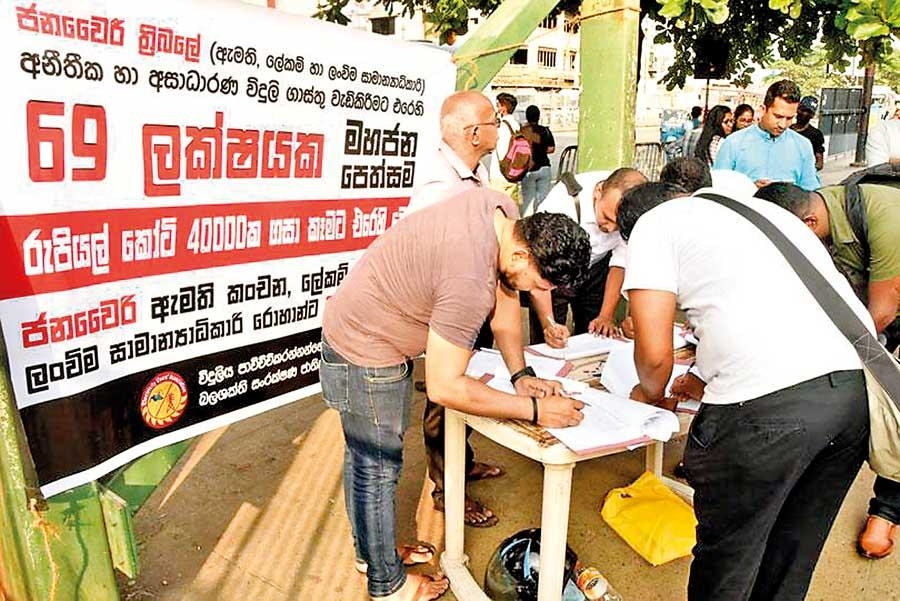Conflicts of interest between GOVT. and PUCSL to further burden consumers?

Following the electricity tariff hike revision in August 2022, the Power and Energy Ministry announced another tariff hike that would have come into effect from January 1, 2023 on the basis that the tariff hike in August 2022 wasn’t adequate to meet generation costs. According to the subject minister Kanchana Wijesekera, the Ceylon Electricity Board (CEB) estimates a cost of Rs. 56.90 per unit of electricity if consumers are to experience an uninterrupted power supply. However, the current average tariff is at Rs.29.14 and the deficit is estimated at Rs. 423.5 billion. But the Public Utilities Commission (PUCSL), which is the regulator is of the view that this is an attempt to burden people in households falling under low electricity consumer category. Energy experts are of the view that the CEB will not be able to generate the required amount of dollars to procure coal and fuel with a rupee tariff revision of this nature. On the other hand, many industries have agreed to continue operations with existing power cuts as they cannot afford another electricity tariff hike.
Disparity in data
A cabinet paper issued by the Ministry of Power and Energy dated December 23, 2022 states that ‘as per the provisions stipulated in Section 30 of the Sri Lanka Electricity Act and being consistent with the General Policy Guidelines, CEB being a distribution licensee has requested PUCSL a price revision on March 4, 2022 on a cost-reflective basis. Accordingly the PUCSL has granted its approval for the licensees to increase the electricity tariff with effect from August 10, 2022. However the revenue generated under the new tariff hike is not adequate to meet even the direct generation costs, apart from other corporate and overhead costs.’
As per the proposal, more rates are expected to be charged from households consuming electricity units between 0-30, 31-60, 61-90 and 91-120. Accordingly, the current unit rate of Rs. 8 for households utilizing 30 units or less will be raised to Rs.30, with a hike of 375%. The tariff for 31 - 60 units consumed, will be increased by 370%, which is an increase of the current rate of Rs. 10 to Rs. 37. The Rs. 10 tariff per unit for households using units between 61 and 90 will be increased to Rs.42. It is a 420% increase than the prevailing rates.
The paper further states that the CEB has been unable to procure sufficient cash flows to procure coal and that it has been incurring losses since 2014. “The supposed demand estimated by CEB is 14920 GwH and is marginally lower than 2021 (15,200 GwH). But after the electricity tariff hike there has been a drop in demand during the last three months,” opined energy expert Dr. Vidura Ralapanawa. “Global research suggests that a 100% increase in tariff will lead to a 8-10% reduction in consumption. Industrial energy use has dropped by 15% and this is unhealthy for the economy as it is leading to an economic contraction. The next tariff hike will further depress the demand.”
